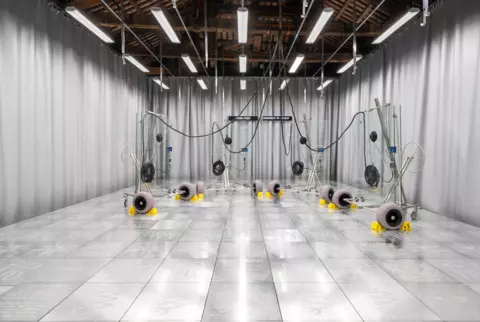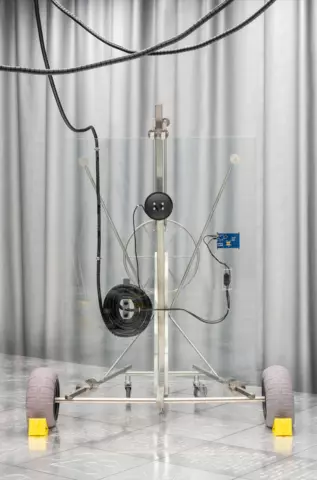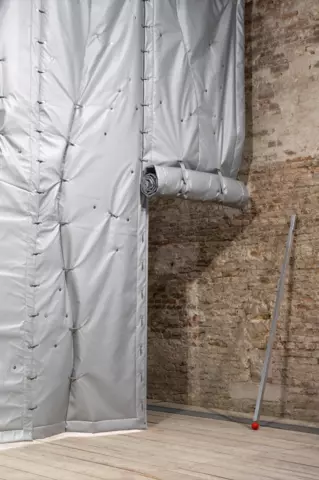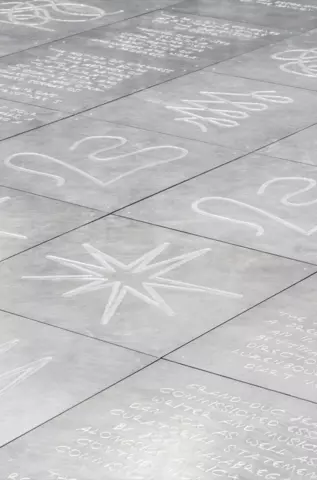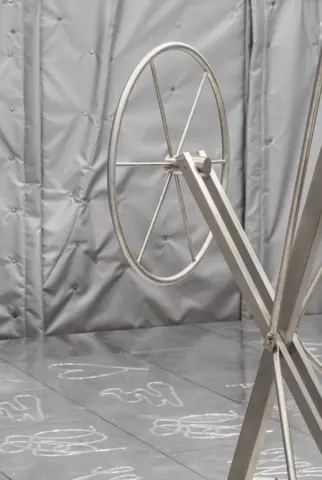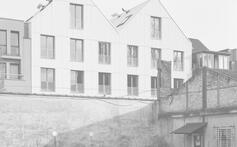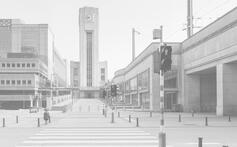The pavilion is conceived as an infrastructure for the transmission of sound. Technology is used to develop a local experiment investigating the transmission of knowledge and work in progress. The pavilion’s infrastructure is constituted of four elements: four walls, a floor, a ceiling, and a curtain façade. The four walls, or ‘Sounds Walls’, are the central piece and sound system itself. They stand on wheels, allowing the artist to interact and work them as they are arranged or rearranged in the space. Each trolley supports a glass panel: the sound is transmitted through one of them via a transducer, a loudspeaker component that by vibrating a rigid surface to create sound. The four sound walls can be in syntony, looping a previous performance, as well as in interference with each other. Each of these moments of confrontation or interference between the work of several artists is defined as ‘dialogue’. The floor, constructed with standard floating floor panels left bare, functions as a vibrating surface tuned to the walls. The aluminium tiles are fixed to a network of Bass shakers, a type of transducer that transmits bass frequencies to floors. The metallic coating of the floor is engraved with symbols and texts that become a temporal record of the pavilion itself, but also the colophon and description of the work. It presents the timeline of appropriations, becoming a palimpsest for the audience to map moments of performance and moments of dialogue.
- Typology
- Exposition
- Status
- Construit
- Year of conception
- 2024

